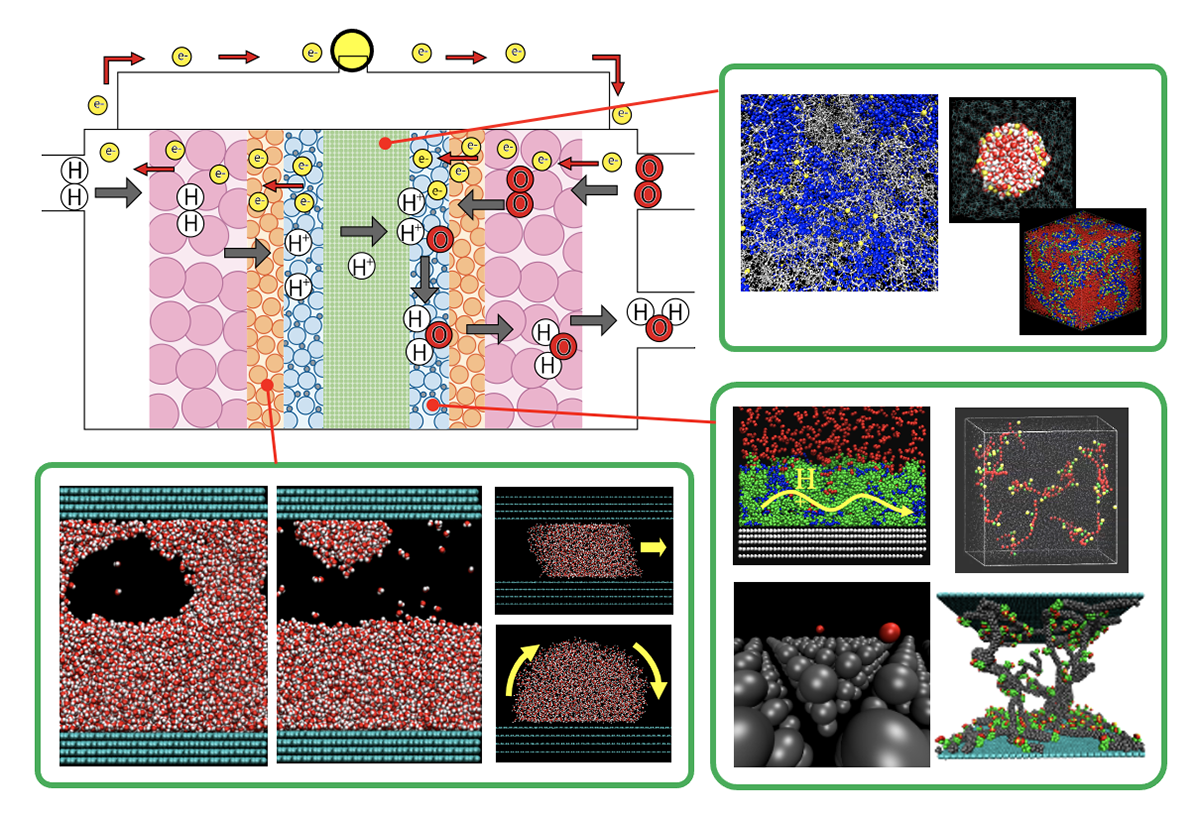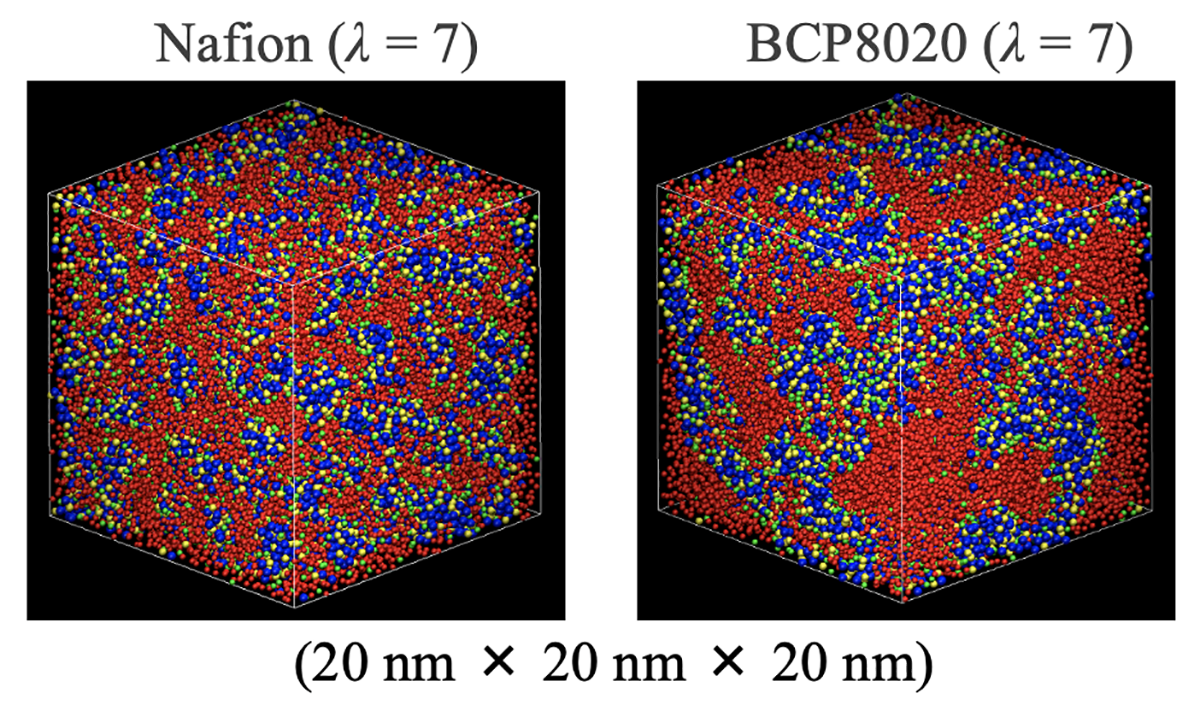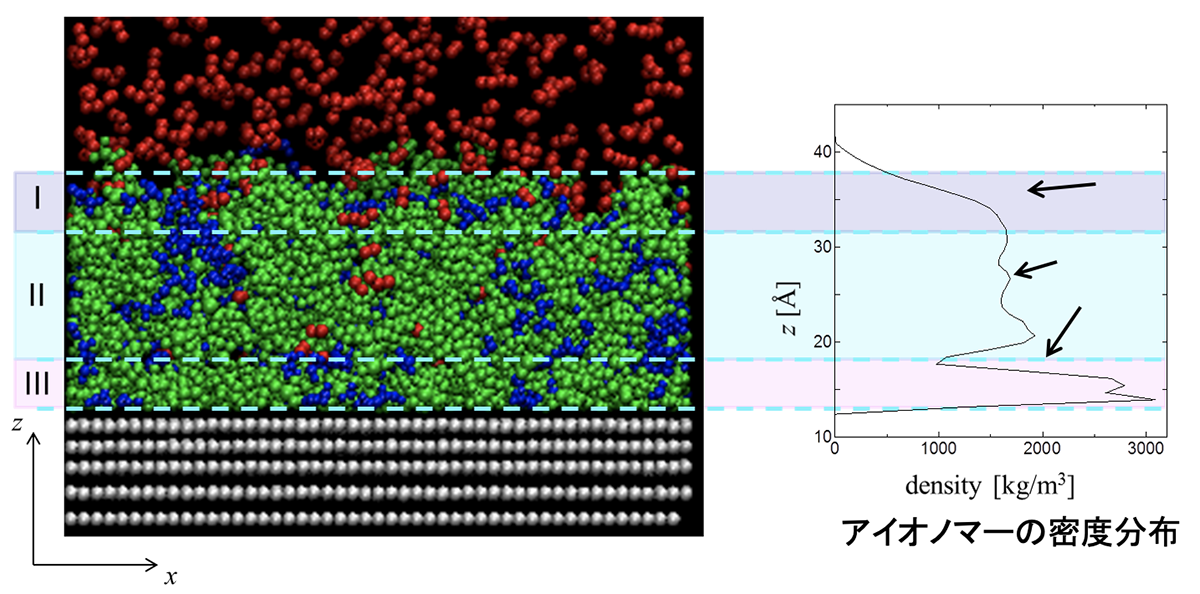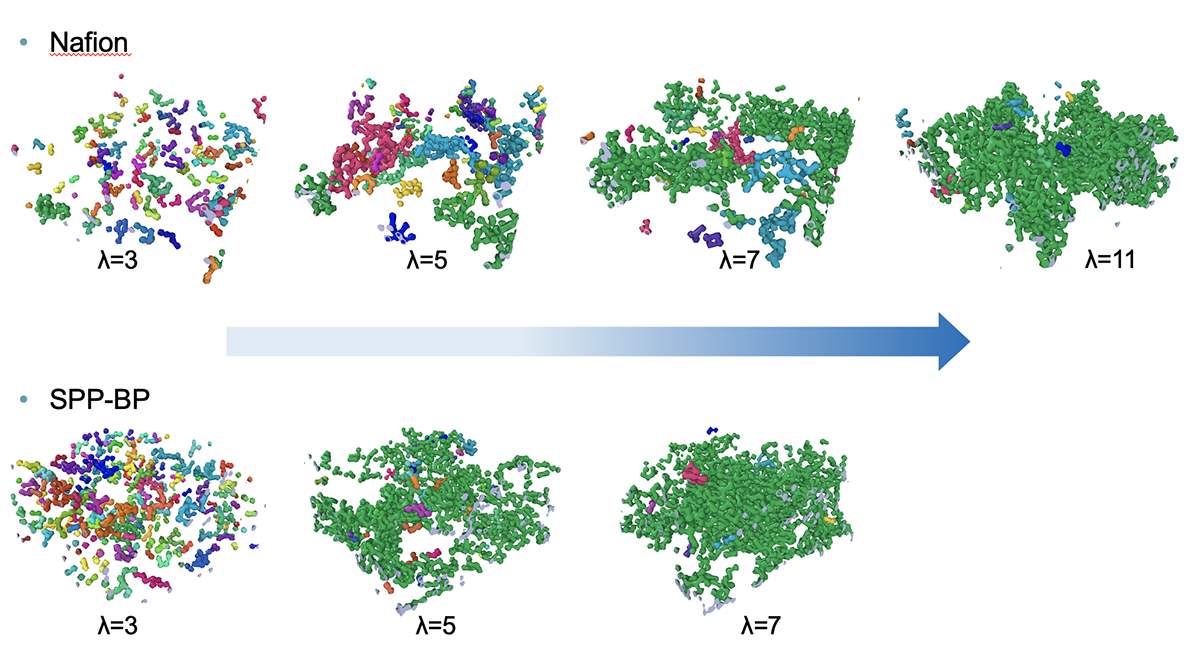
These days measures against global warming are urgently needed, and the development of new energy sources that do not emit carbon dioxide is rapidly progressed. Fuel cells are one of the technologies that can solve this problem, and are expected to be a carbon-free power source because only water is exhausted when hydrogen and oxygen are reacted to extract energy. In particular, polymer electrolyte fuel cells are used in household fuel cells and electric vehicles because of their low operating temperature and high power density.
In order to improve the performance of this fuel cell and to reduce the size and cost of the system, it is important to clarify the transport mechanism of materials such as protons, oxygen and water inside the fuel cell and to quantitatively understand the amount of these materials. Currently, this transport phenomenon is analyzed using various experimental techniques, but predictions using numerical simulations are considered essential in order to reduce the development period and costs in the future, and to analyze areas that are difficult to measure by experiments.
For this reason, many analyses by macroscopic numerical simulations have been attempted, but now most of these analyses cannot qualitatively explain the experimental results. This discrepancy between the experimental and simulation results arises because various components inside a fuel cell construct flow fields whose size is from micrometers to nanometers, and analyses by conventional continuum theory cannot correctly predict such microscale transport phenomena.
From this standpoint, our laboratory analyses transport phenomena of materials in polymer electrolyte fuel cells by molecular scale simulations. The subjects of analysis include proton and oxygen transport phenomena in the polymer electrolyte membrane and catalyst layer that construct the fuel cell system, as well as ionomer adsorption phenomena during the formation process of catalyst layer. These studies are performed together with researchers from multiple companies and universities related to fuel cells, and the obtained knowledge is of great use in the future development of fuel cells.
 Large scale molecular simulations for the transport phenomena of reactant materials in polymer electrolyte fuel cells
Large scale molecular simulations for the transport phenomena of reactant materials in polymer electrolyte fuel cells
 Water cluster structure in polymer electrolyte membrane (left) Nafion membrane (right) co-block hydrocarbon polymer membrane
Water cluster structure in polymer electrolyte membrane (left) Nafion membrane (right) co-block hydrocarbon polymer membrane
 Microscale structure of ionomer on a platinum surface and the simulation of oxygen permeability of the ionomer
Microscale structure of ionomer on a platinum surface and the simulation of oxygen permeability of the ionomer
 Water cluster structure in ionomer (top) Nation ionomer (bottom) SPP-BP ionomer
Water cluster structure in ionomer (top) Nation ionomer (bottom) SPP-BP ionomer
-
1 The study of ammonia combustion for carbon neutrality
-
2 Research and development of semiconductor nanodevices
-
3 Quantum/molecular dynamics analyses for the transport phenomena of materials in polymer electrolyte fuel cells
-
4 Development of ammonia combustion reaction models and its application to numerical combustion simulation
